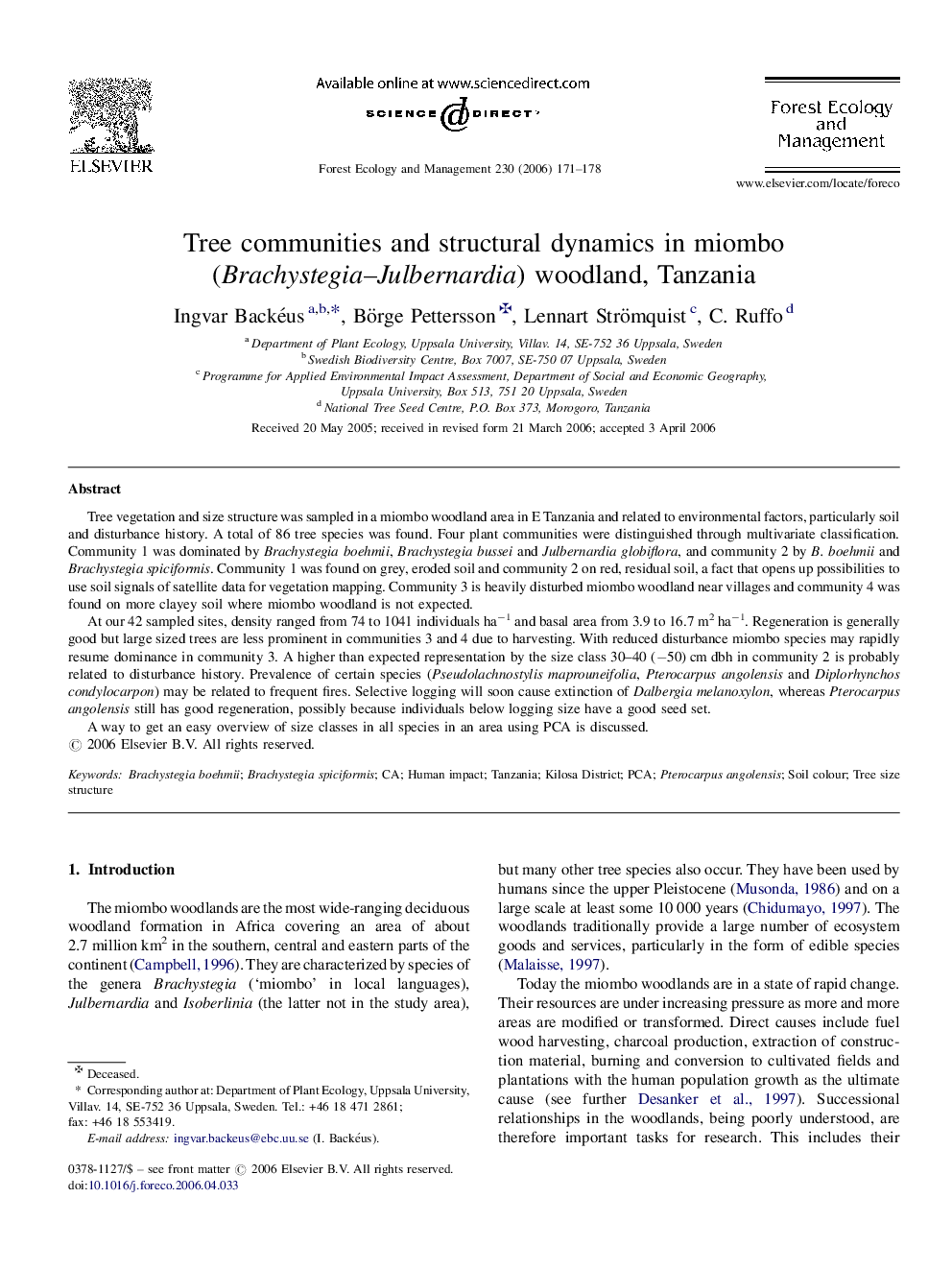| Article ID | Journal | Published Year | Pages | File Type |
|---|---|---|---|---|
| 90440 | Forest Ecology and Management | 2006 | 8 Pages |
Tree vegetation and size structure was sampled in a miombo woodland area in E Tanzania and related to environmental factors, particularly soil and disturbance history. A total of 86 tree species was found. Four plant communities were distinguished through multivariate classification. Community 1 was dominated by Brachystegia boehmii, Brachystegia bussei and Julbernardia globiflora, and community 2 by B. boehmii and Brachystegia spiciformis. Community 1 was found on grey, eroded soil and community 2 on red, residual soil, a fact that opens up possibilities to use soil signals of satellite data for vegetation mapping. Community 3 is heavily disturbed miombo woodland near villages and community 4 was found on more clayey soil where miombo woodland is not expected.At our 42 sampled sites, density ranged from 74 to 1041 individuals ha−1 and basal area from 3.9 to 16.7 m2 ha−1. Regeneration is generally good but large sized trees are less prominent in communities 3 and 4 due to harvesting. With reduced disturbance miombo species may rapidly resume dominance in community 3. A higher than expected representation by the size class 30–40 (−50) cm dbh in community 2 is probably related to disturbance history. Prevalence of certain species (Pseudolachnostylis maprouneifolia, Pterocarpus angolensis and Diplorhynchos condylocarpon) may be related to frequent fires. Selective logging will soon cause extinction of Dalbergia melanoxylon, whereas Pterocarpus angolensis still has good regeneration, possibly because individuals below logging size have a good seed set.A way to get an easy overview of size classes in all species in an area using PCA is discussed.
